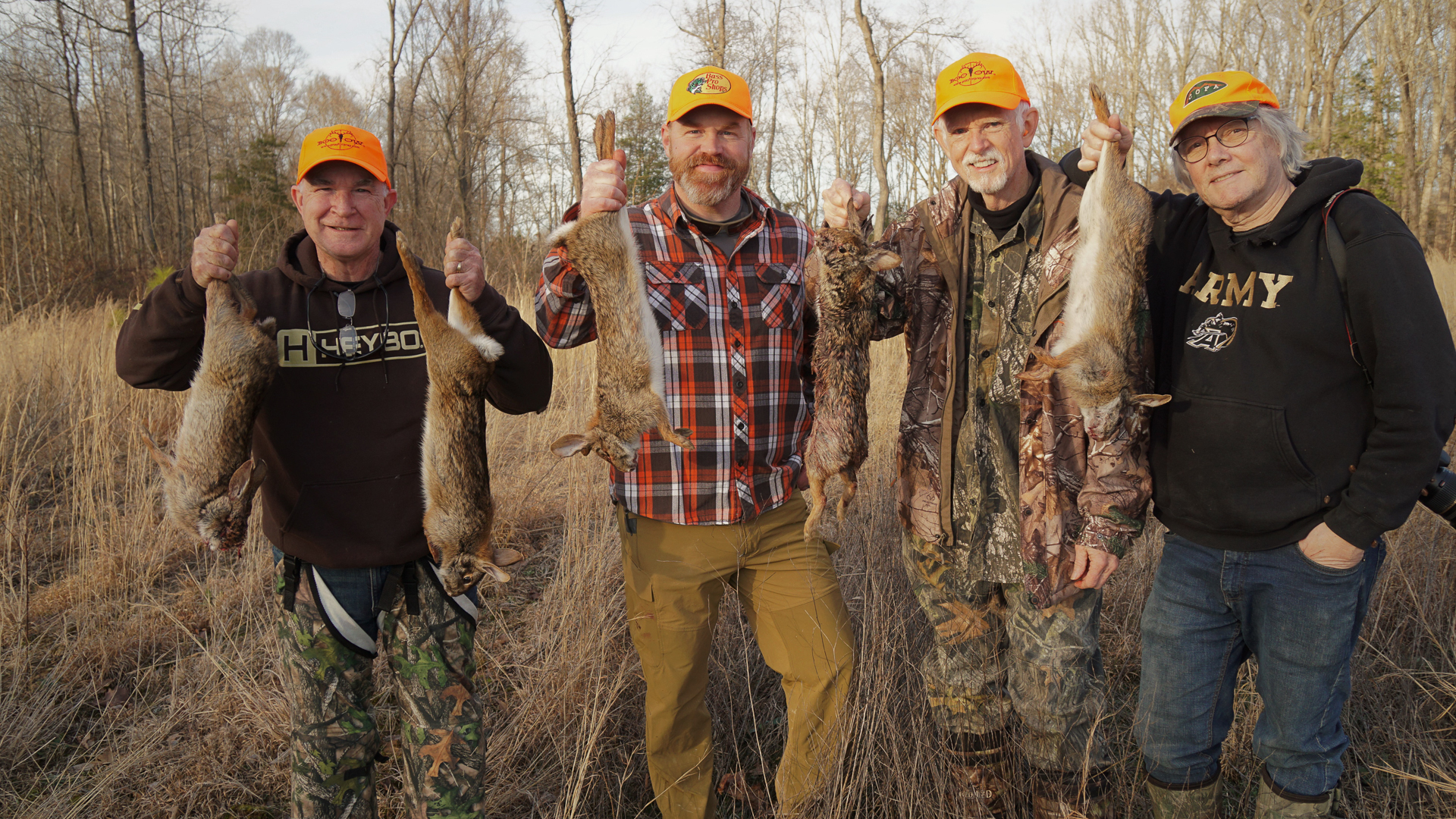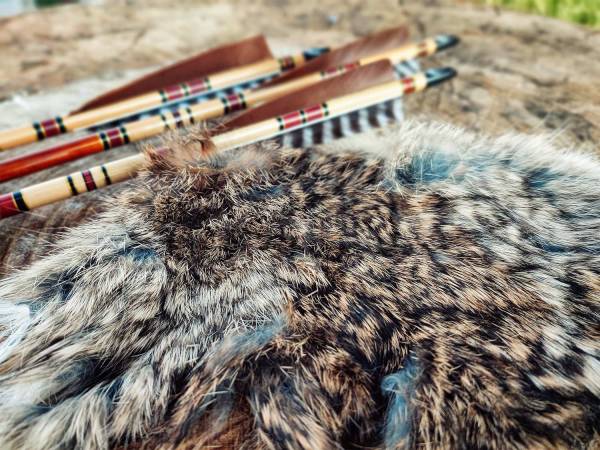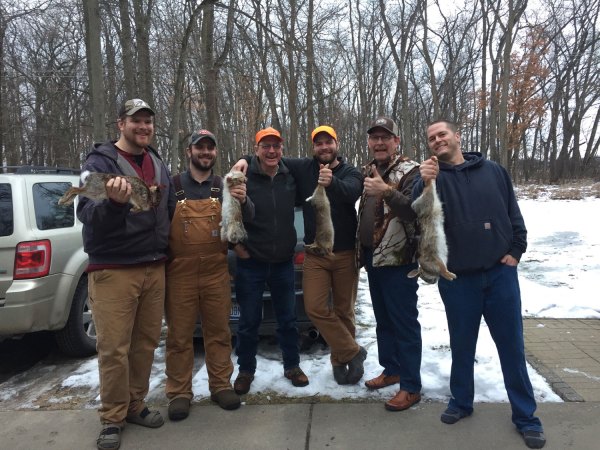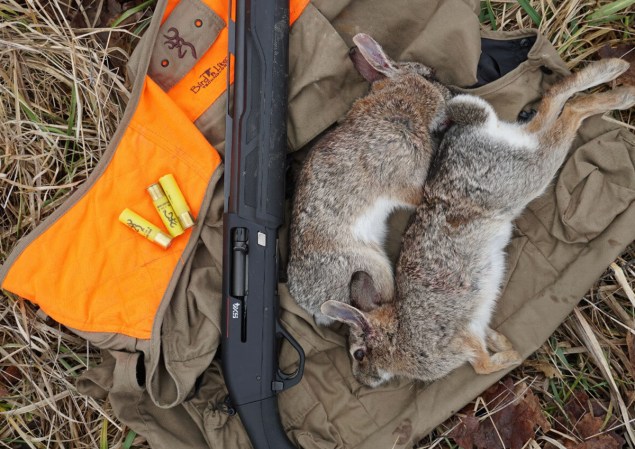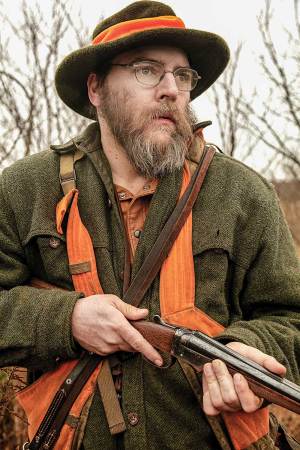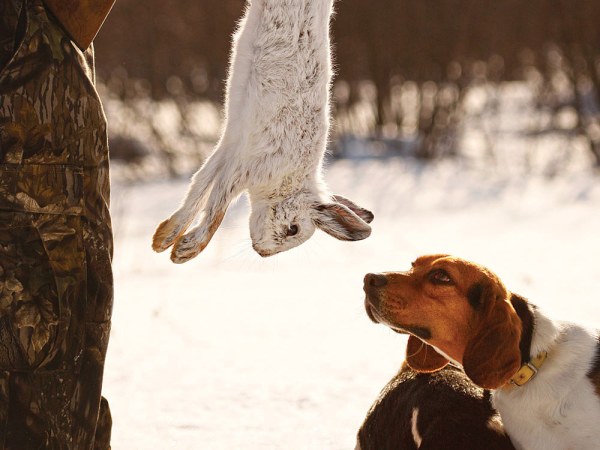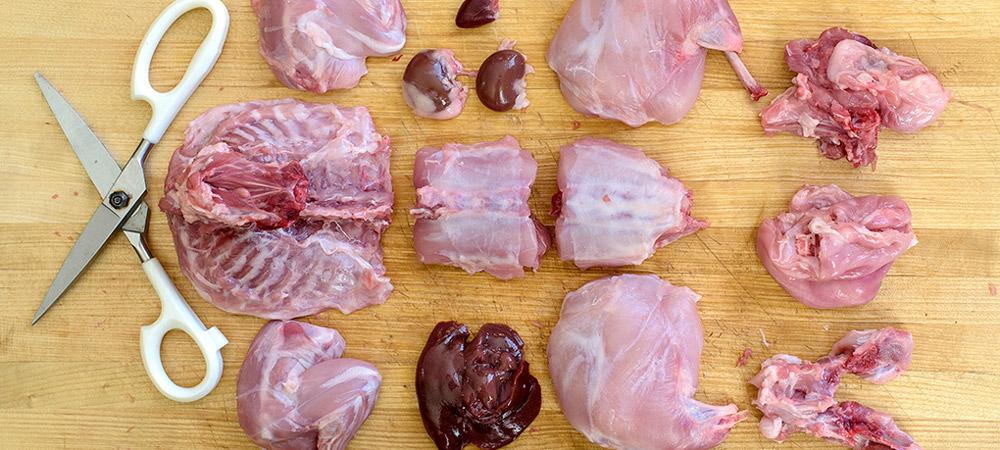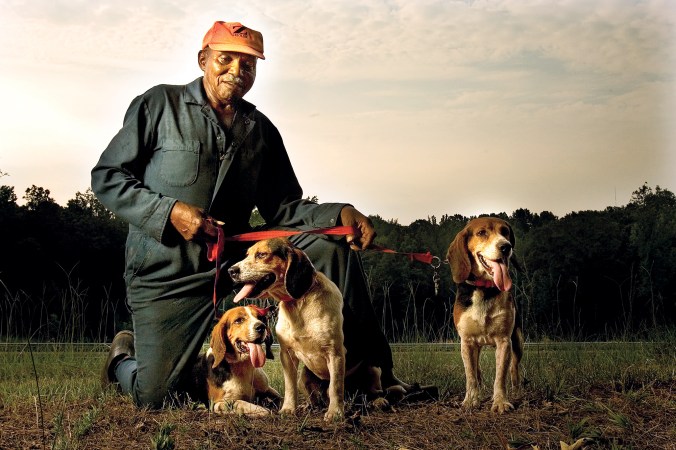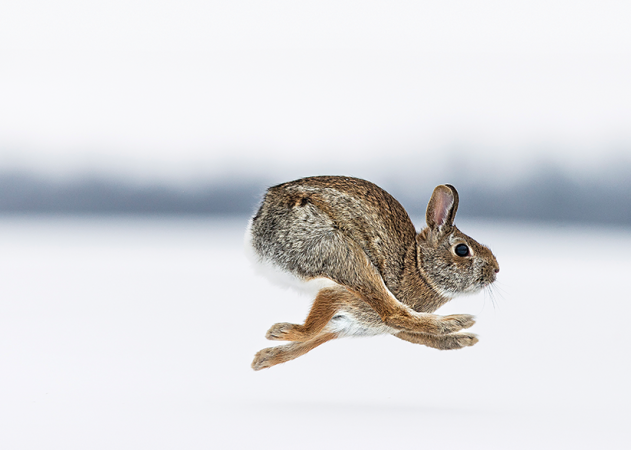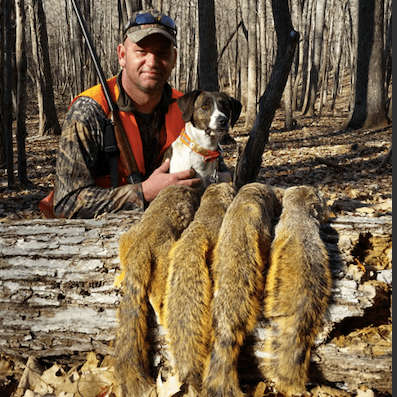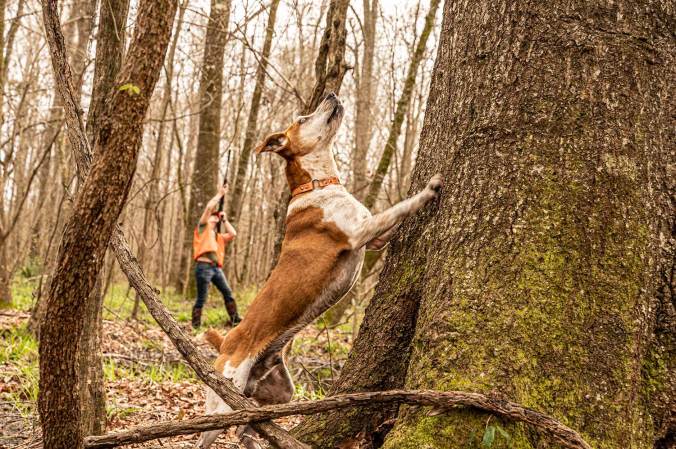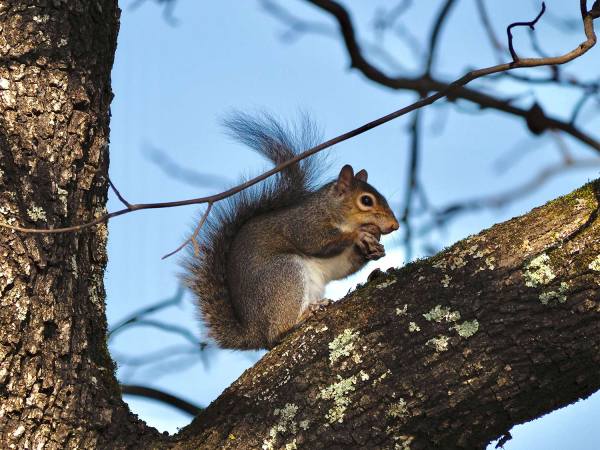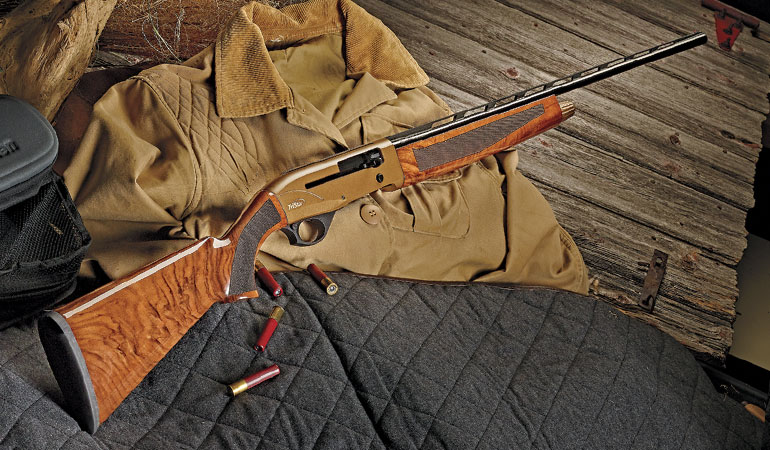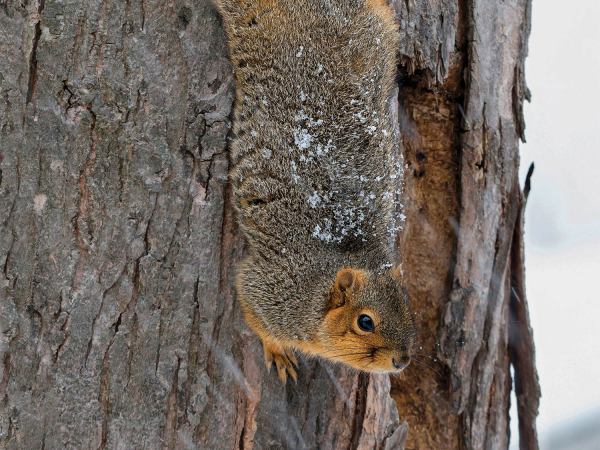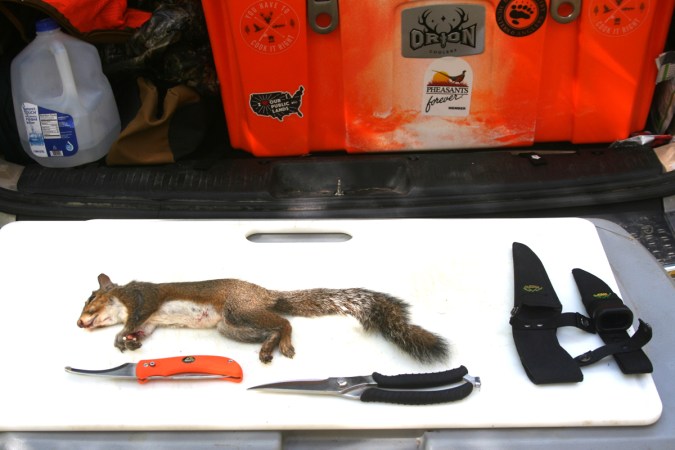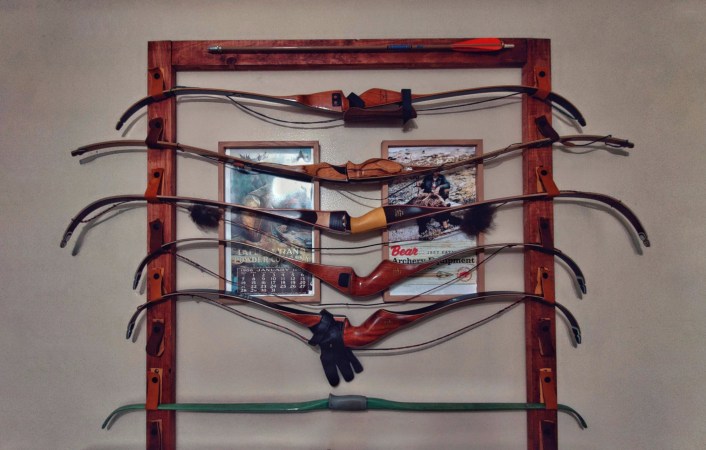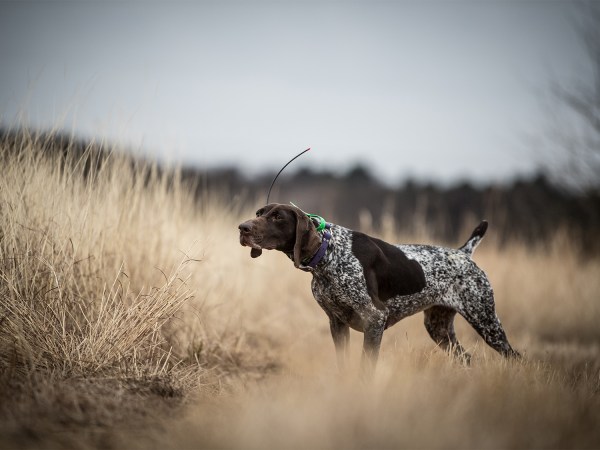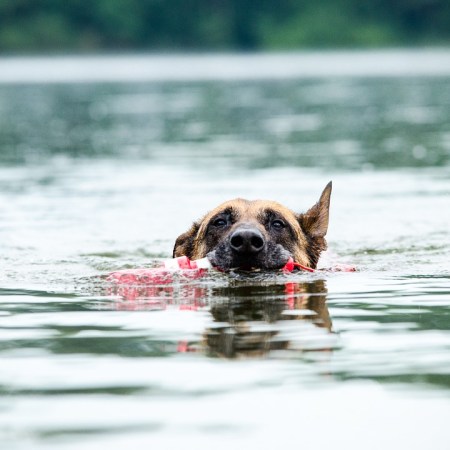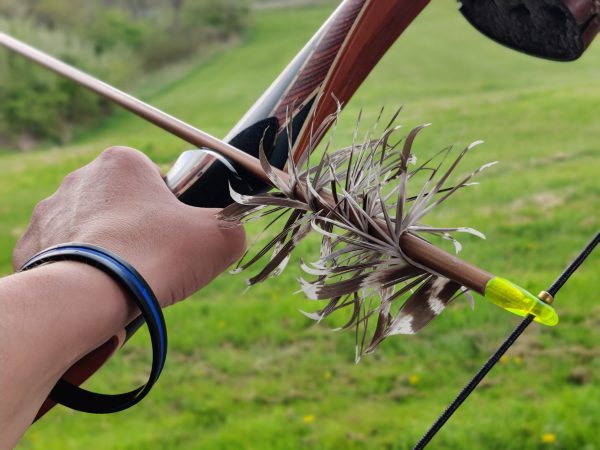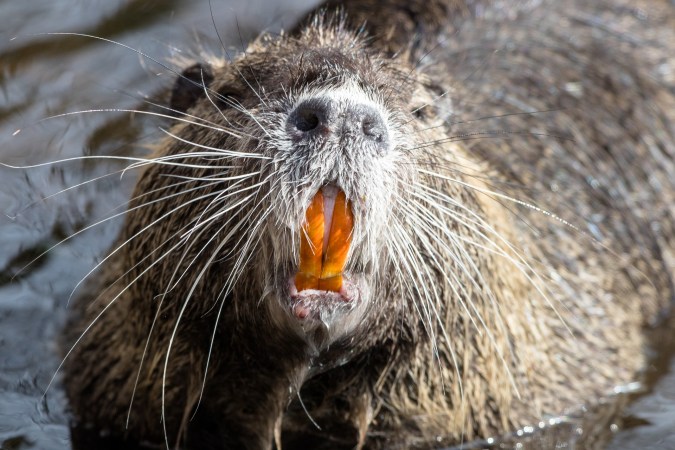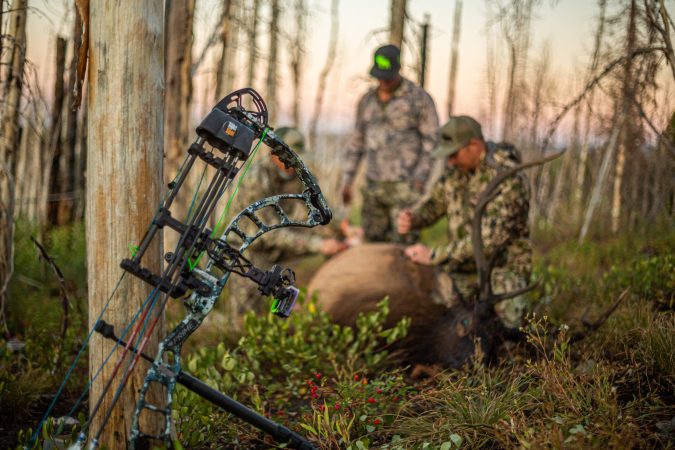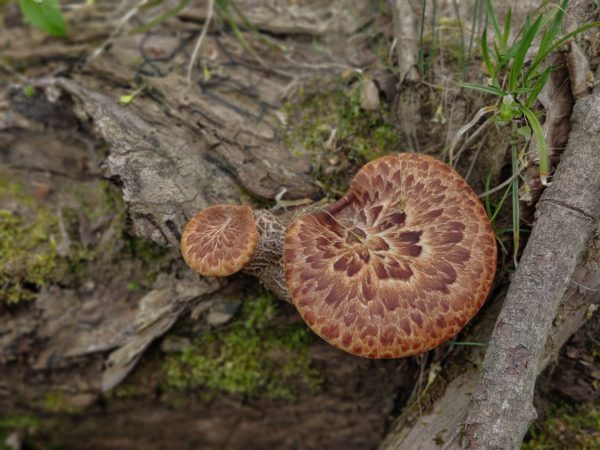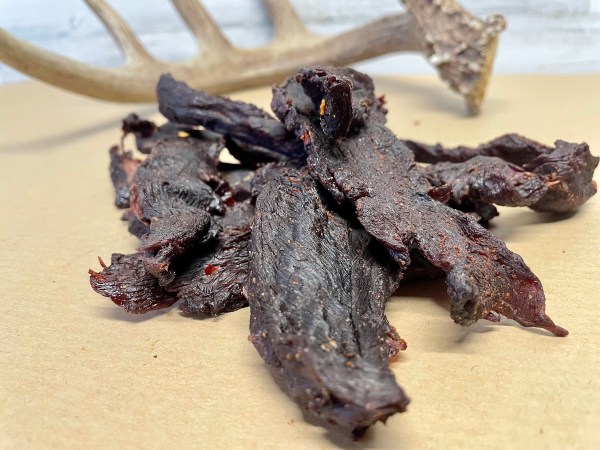There was a time when rabbit hunting was king. It’s what hunting folks did. In the early 1900s, hunting rabbits was more popular than deer and turkey hunting because both of those species were in decline. It was also (and still is) incredibly accessible. All you needed was a single-shot 20-gauge and a willingness to strike out into the woods. However, as deer and turkey populations rebounded, rabbit hunting interest waned. Between habitat loss and the growth of whitetail deer hunting, serious rabbit hunters quickly became the minority.
Look close enough, however, and you’ll a rabbit hunting revival taking hold, particularly the southeast. More and more hunters are buying dogs and discovering the beauty in the sounds of the hounds tracking rabbits. They’re also finding solitude in a long, quiet walk in the woods. If you’re considering giving rabbit hunting a try this season, here’s a look at everything you need to know about how to hunt rabbits. We’ll cover the following rabbit hunting topics. You can read this guide straight through, or click on a particular section of interest below.
- What Type of Rabbits Can You Hunt?
- Habitat: How to Find Rabbits
- When is the Best Time to Hunt Rabbits?
- Rabbit Hunting Without Dogs
- Rabbit Hunting With Dogs
- Tips for Shooting Rabbits
- Best Guns, Chokes, and Loads for Rabbit Hunting
- What to Wear When Rabbit Hunting
- How to Clean a Rabbit
- How to Cook a Rabbit
What Type of Rabbits Can You Hunt?
The cottontail rabbit subspecies are most often chased by rabbit hounds each season. The Eastern cottontail and the swamp rabbit typically make up the bulk of the bag for hunters. The eastern cottontail is found throughout the eastern U.S. in abundant populations, while the swamp rabbit inhabits lands across the Gulf Coast and south-central portions of the U.S.
Out West, you’ll often find hunters targeting jackrabbits, typically considered a nuisance critter because of their destructive nature and ability to damage to croplands. In fact, back in the 1930s, jackrabbit populations reached plague-like status that led to rabbit drives. The largest successful drive took place in Lane County Kansas and involved 10,000 people in an eight square mile area. It was estimated that this drive resulted in 35,000 bagged rabbits.
Common Cottontail Rabbit Subspecies
- Eastern Cottontail (Sylvilagus floridanus)
- Swamp Rabbit (Sylvilagus aquaticus)
- Desert Cottontail (Sylvilagus audubonii)
- Mountain Cottontail (Sylvilagus nuttallii)
- Alleghany Cottontail (Sylvilagus obscurus)
- Marsh Rabbit (Sylvilagus palustris)
- New England Cottontail (Sylvilagus transitionalis)
How to Find Rabbits
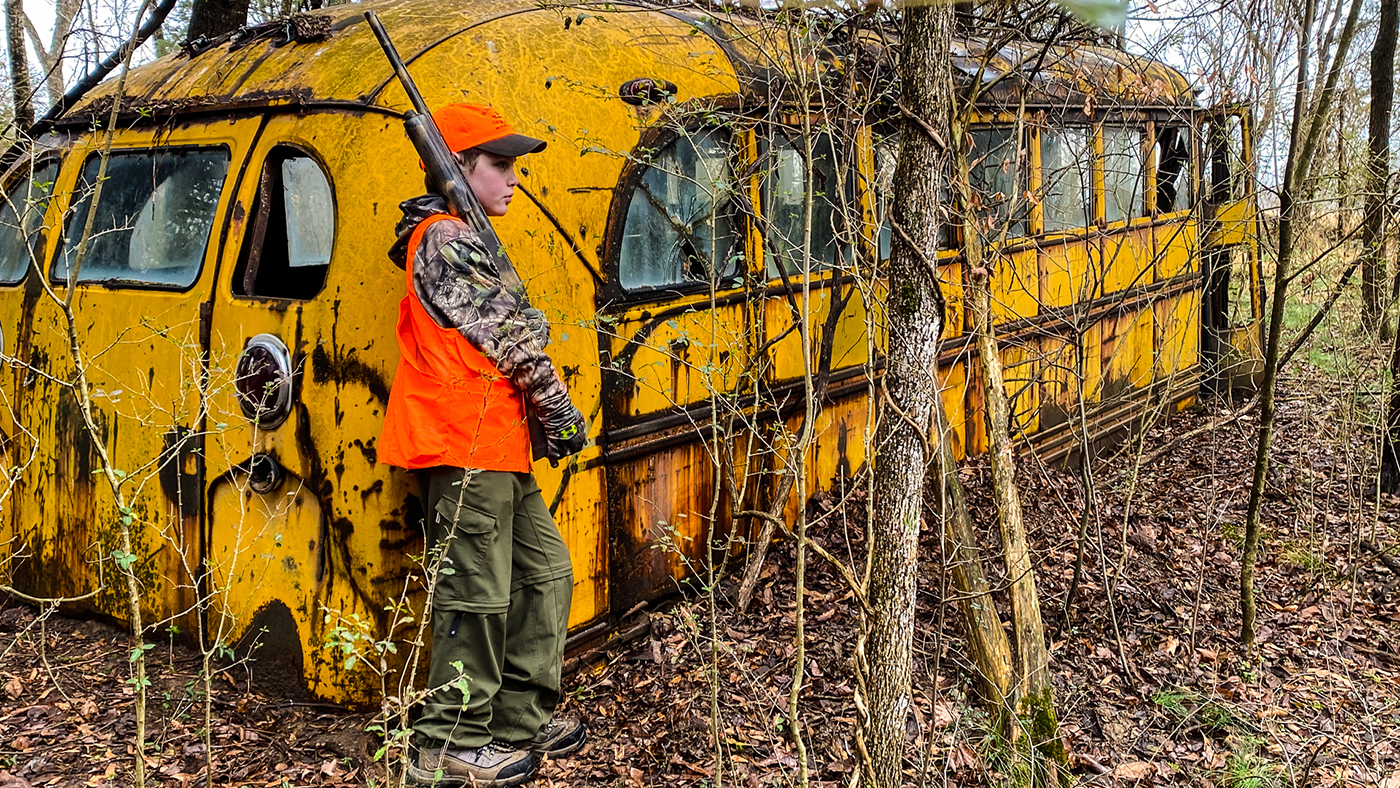
One of the keys in learning how to hunt rabbits is learning to find rabbits. Rabbit populations vary by region and are largely dependent on predator numbers in a given area, as well as available habitat. Much of the urban development and some farming practices that led to the demise of quail populations across the country has also been detrimental to rabbit populations. However, there’s still sufficient habitat for rabbits to thrive across much of the country.
In fact, you can still find rabbits just about everywhere. They are highly adaptable creatures that live along field edges as well as in the timber. You’ll find them in the thickest terrain imaginable. Look for heavy cover in and around fields, or in broken-up timber. Also, rabbits love wood piles. Rabbits won’t be far from their favorite groceries either: grasses, crops, clover, twigs, buds, and bark from small, tender trees and brush.
Hotspots to find rabbits include: hollow logs, briar thickets, overgrown fence rows, brush piles, abandoned barnyards, home sites, junk piles, and old junked cars or trucks left out in the field. Any structure that offers a small, dry place for a rabbit to hide is usually a good place to look.
When is the Best Time to Hunt Rabbits?
Rabbit hunting seasons around much of the country typically take place from mid-November to the end of February. Longtime rabbit hunting guide from Tennessee, Billy Montague, is quick to point out that every day of the season is a good day to go rabbit hunting, but he does have his favorite conditions. “The best days seem to be when the temperature is around 45-55 degrees, and the sun is shining,” says Montague. “Cloudy days seem to find rabbits holed up more often.”
Like other game animals, rabbits tend to be most active at dawn and dusk.
Hunting the early part of the rabbit season can be most productive due to milder temperatures and less hunting pressure. However, the late season is a choice time in states where snow cover allows hunters to follow fresh rabbit tracks.
Rabbit Hunting Without Dogs
The beauty of rabbit hunting is that it can be done with, or without, the use of dogs. Team hunting works best when hunting without a dog. One hunter can take up a post as the shooter, while the other hunter moves in to a potential rabbit hide to swat or beat brush to push a rabbit from the cover.
You can also move slowly through target areas in search of rabbits. Stop every 15 to 20 paces to scan the landscape. You may bump a rabbit as you move, but most often, he’ll hold tight until you stop. At that point, the rabbit often thinks it’s been spotted and will attempt to make a hasty retreat.
The ideal setup for hunting without dogs is short, brushy cover with ample openings (shooting lanes) that allow the hunter to make the shot as rabbits are pushed from their hide.
Rabbit Hunting With Dogs
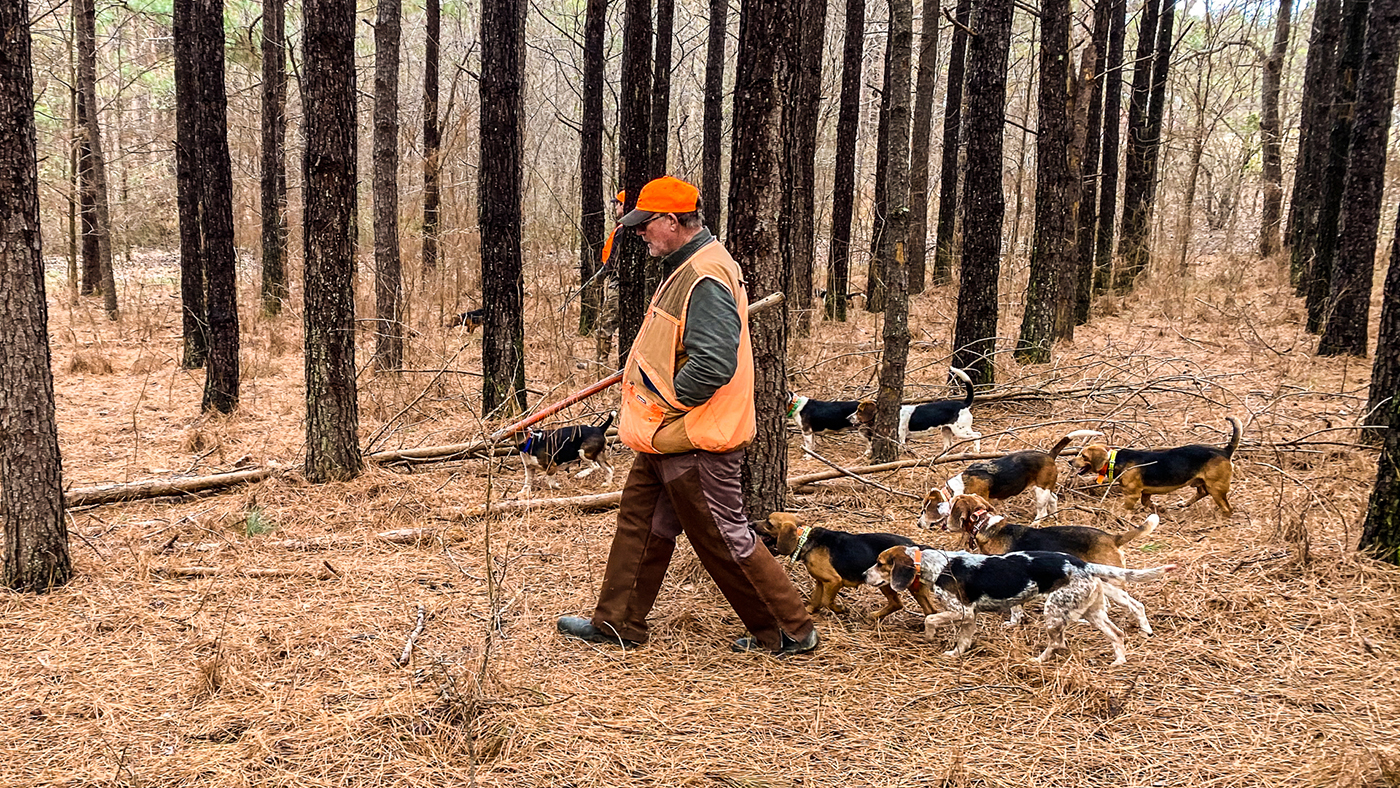
Few sounds are as sweet as the song of rabbit hounds hot on the trail. It’s something every hunter should experience at some point in their life. Beagle hounds are the number one choice among rabbit hunters. They are small in stature, making for the perfect dog to get in and out of tight spots and brush as they work to sniff out a rabbit.
The dog’s job is to turn up a rabbit by following its scent. And whether by scent, or sight, you’ll know without a doubt when a rabbit hound finds what it’s looking for. The woods will come alive with the chorus of beagle dogs in hot pursuit.
Once the chase begins, it’s important for hunters to quickly move into the location where the rabbit was first jumped. Rabbits habitually circle back to the same spot they left. Few things are as exciting as when you hear the hounds making the turn and heading back your way. Be watching! The rabbit will be well ahead of the dogs, sneaking back to its hideout.
Top Rabbit Hunting Dog Breeds:
- Beagle
- Basset Hound
- Dachshund
- Jack Russell Terrier
- Feist
- German Wirehair
Check out the video below for a closer look at what you might expect on a rabbit hunt.

If you’re serious about buying a rabbit dog, it’s smart to search online for rabbit hunting and rabbit dog training clubs in your area. There’s a good chance you’ll find an active club full of members who can offer tips on how to find the right dog for you, as well as training and hunting advice.
Tips for Shooting Rabbits
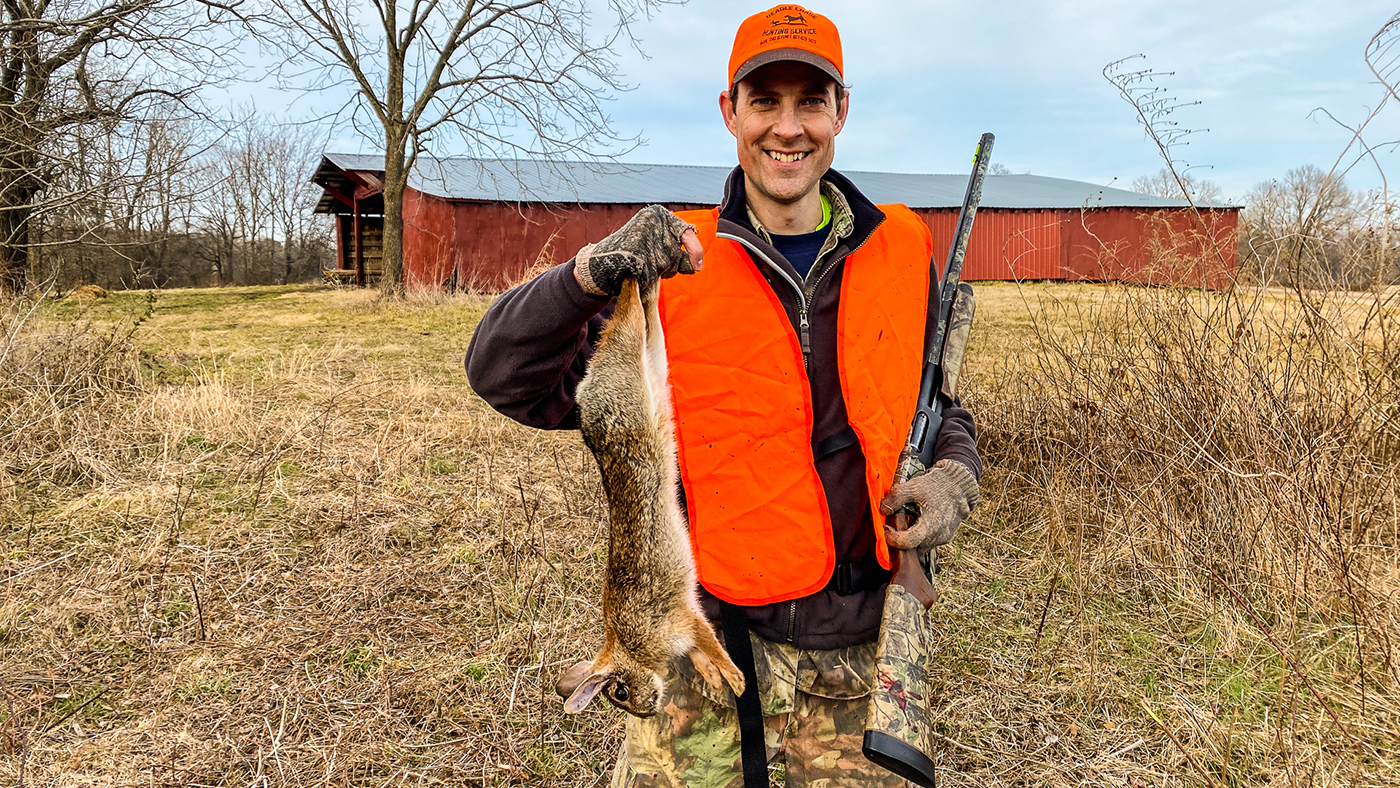
Rabbit hunting delivers some of the most challenging shot opportunities of any critter you’ll hunt all season. You’ll have shots coming, going, and darting from side to side. And at times, you’ll have simple shots on rabbits as they stand still, thinking they are invisible.
To bag more rabbits, and avoid misses, follow these tips.
- Take a stand where you have ample openings for a shot.
- Stand in front of a tree, not behind it as you wait for the shot.
- Don’t forget to lead the rabbit.
- A running rabbit will often stop (to look and listen) if he’s far enough ahead of the dogs, making for a much easier shot.
- Be still and quiet to avoid spooking an approaching rabbit as it circles back to your location.
- Whistling like a hawk will often make a rabbit stop and stand up, giving you the perfect shot opportunity.
Guns, Chokes, and Loads for Rabbit Hunting
What gun works best for rabbit hunting? Well, that could all depend on who you ask, and how they hunt. Most hunters tote a shotgun. “Rabbit hunters typically carry a 12 gauge or 20 gauge,” says Montague. “Either gun works just fine on both cottontail or swamp rabbits when choked with a modified, 26-inch or 28-inch barrel.”
As with any style of hunting, every hunter seems to have their favorite gun. Just be sure it’s one that allows you to smoothly swing on a fast-moving target, regardless of whether it’s a pump gun, break action, or auto-loader.
As for the best loads for rabbits, “I like a long brass 7 ½ shot for cottontail rabbits and 4 or 6 shot for the larger swamp rabbits,” says Montague. Keep in mind, swamp rabbits are larger in size, weighing as much as 5 pounds, versus the smaller eastern cottontail weighing 2 to 3 pounds. “Light target shells just don’t seem to be enough to get the job done when shooting through brush at rabbits tucked into tight places,” says Montague.
You don’t need anything fancy when it comes to a rabbit gun. Most any shotgun and choke combination will do the trick. The toughest part is making the shot when the opportunity arises. When you miss, it won’t be because of the gun.
READ NEXT: 10 Great Rifles, Handguns, and Shotguns for Rabbit Hunting
When hunting without dogs, some hunters choose to stalk the woods with a .22 rifle at their side. This rimfire rifle option presents an exciting small game challenge with off-hand shots at rabbits tucked tight in the brush. Be sure to check your local regulations before choosing a rabbit gun.
What to Wear When Rabbit Hunting
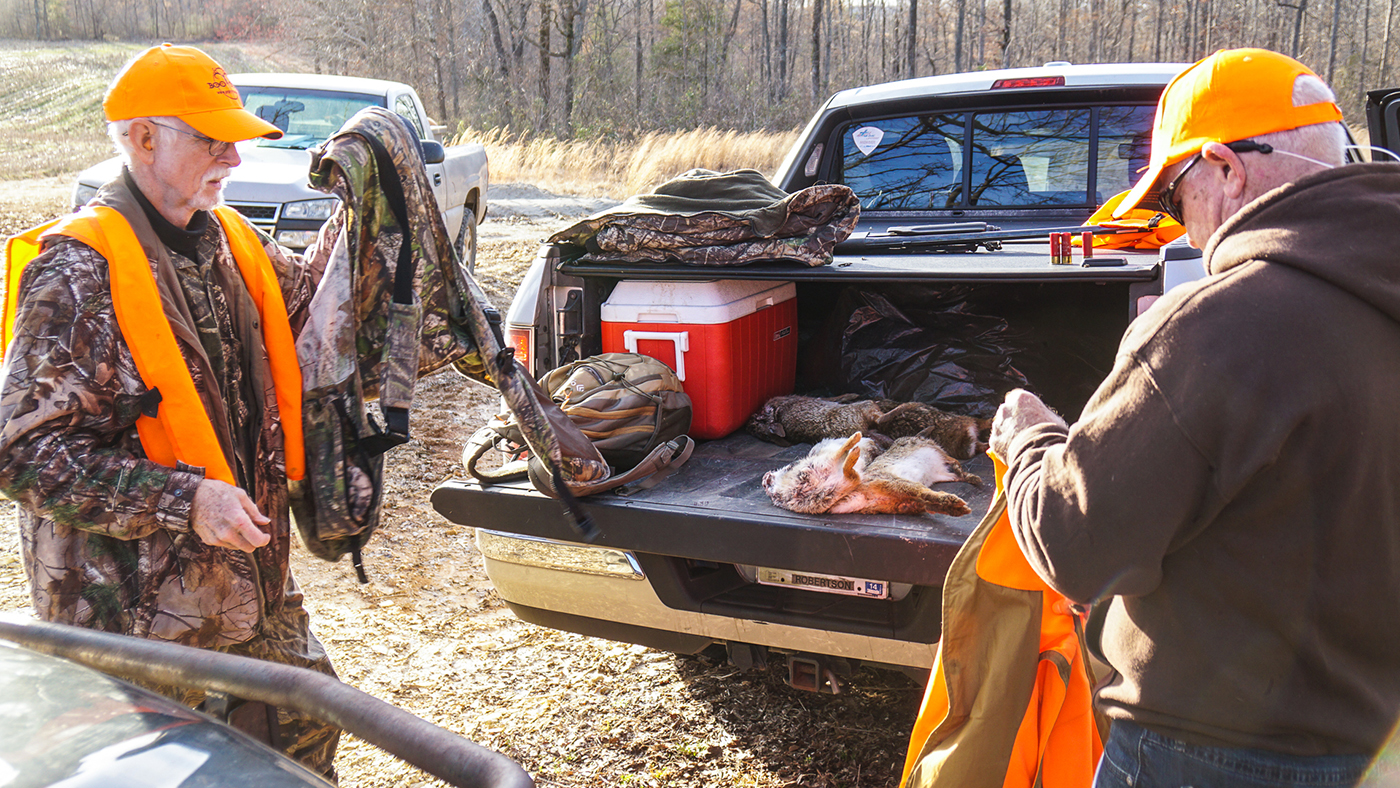
You’ll likely cover lots of ground throughout a day of hunting rabbits. Be sure to wear comfortable clothes, preferably in layers, to keep you prepared for any conditions. The ability to add or remove layers allows you to stay comfortable throughout the day as temperatures climb and you begin to warm up from a steady walk in the woods or field.
Quality boots are a must. The type of terrain you’ll be hunting will determine what style of footwear is needed. A comfortable pair of rubber knee boots are the go-to option when sloshing through the swamps, while a comfortable pair of leather boots tend to work best when hunting the uplands.
You’ll spend plenty of time wading through the brush and briars. This is no place for the thin, fancy pants you’ll wear on the mountain in elk season. You need briar-proof pants or bibs when it comes to kicking up rabbits in the thickets they call home. The best upland bird hunting pants are also a good choice for rabbit hunting. Also, make sure you round things out with an orange vest and hat so you’re visible to other hunters in your party.
How to Clean a Rabbit
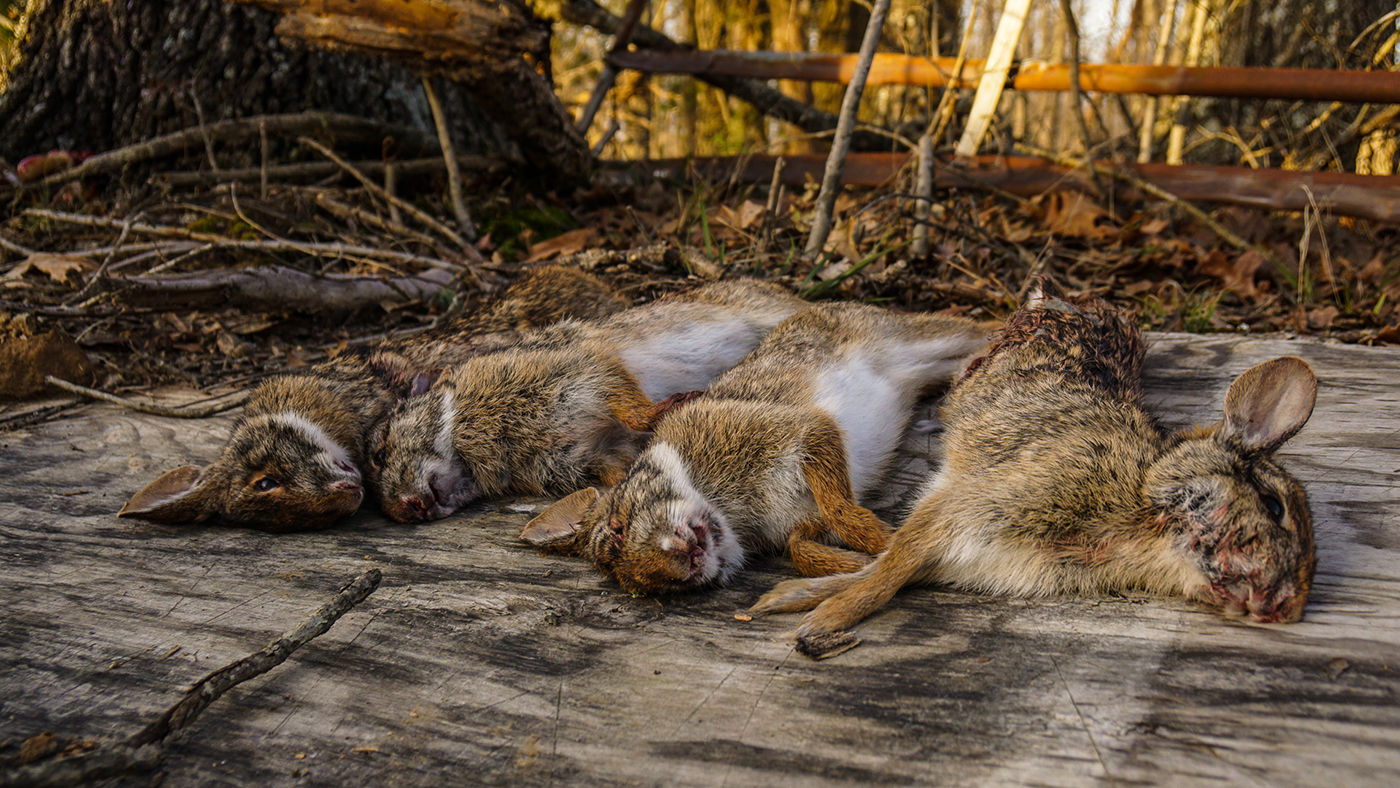
Hopefully, at the end of the hunt you’ll have a sack full of rabbits to prepare for the table. Follow the process below to properly clean your rabbits. Follow these steps outlined by the Missouri Department of Conservation:
- Start by cutting through the skin around each hind leg, just above the “knee” joint.
- Next, cut through the skin from one hind foot to the other, staying on the inside of the legs, connecting the circular cuts made previously.
- Next, run your fingers under the skin, creating a “loop” on the back just in front of the tail. While holding both hind feet with one hand, grab the loop of skin just created and pull downward until you have separated the skin from the carcass approximately half way down the rabbit’s back.
- From the belly side of the rabbit, grab the skin, and pull downward.
- Continue this process until you have removed the skin all the way down to the rabbit’s front legs, just past the shoulder.
- Use your fingers to separate the skin from the rabbit’s leg at the “elbow” joint, creating another loop of skin.
- Insert the index finger of one hand through the loop of skin while grabbing the already-skinned shoulder of the rabbit with the other hand. Pull in opposite directions until the front leg is completely separated from the skin. Repeat the process with the other front leg.
- Continue pulling the skin downward until you have reached the base of the rabbit’s head. With a sharp knife, separate the rabbit’s head, with skin attached, from the rest of the carcass. Remove the front and hind feet using a sharp knife. You are now ready to gut the rabbit.
- Make an incision just below the rabbit’s sternum, being careful not to puncture any internal organs.
- Cut downward from the sternum through the rabbit’s pelvis, taking caution not to cut the intestines.
- Reach into the rabbit’s body cavity, grabbing just above the heart, and pull downward until all of the entrails are removed.
- Rinse the carcass thoroughly.
Here’s a video on how to skin and clean a rabbit, fast and easy, with Billy Montague.
Avoid Tularemia
Tularemia is a rare infectious disease that infects rabbits and humans. It can be spread from infected rabbits to humans through insect bites or through small cuts in the skin. The Mayo Clinic suggests always wearing gloves when cleaning rabbits and cooking rabbit meat to 160 degrees.
How to Cook a Rabbit
If you can fry chicken, you can handle the task of bringing a delicious fried rabbit meal to the table as well. And your guests may not even know the difference. Here’s a quick look at the process for how to make it happen.
- Quarter rabbit into 4 pieces (2 front legs, 2 hind legs), and split the saddle (backstraps/spine) into 2 additional pieces (6 total pieces)
- Brine the rabbit in buttermilk, and whatever herbs and seasonings you care to add for flavor, and to help keep the lean meat moist and tender
- Dredge rabbit in all-purpose flour, salt, and pepper and let rest before frying
- Heat oil in a cast iron skillet to medium-high heat to 350°F
- Add rabbit pieces and fry until golden brown (8-10 minutes) and then flip pieces to repeat the process
- Internal temperature of rabbit in thickest pieces should be 160 degrees
Book a Hunt or Buy a Pup
If you’re looking to book a rabbit hunting adventure and you’re in the Tennessee area, be sure to check out Montague’s Beagle Chase Hunting Service on Facebook, or by calling (901) 626-5822. And if you’re looking to buy a Beagle pup of your own, they’ve got you covered there as well with some of the finest rabbit hounds in the country.
Final Thoughts on How to Hunt Rabbits
Rabbit hunting provides a unique experience, rich in tradition, that’ll take you back to simpler times so desperately needed today. It’s a casual hunt that is best experienced with friends and family. And though the game is small in size, the memories made will be mighty.
